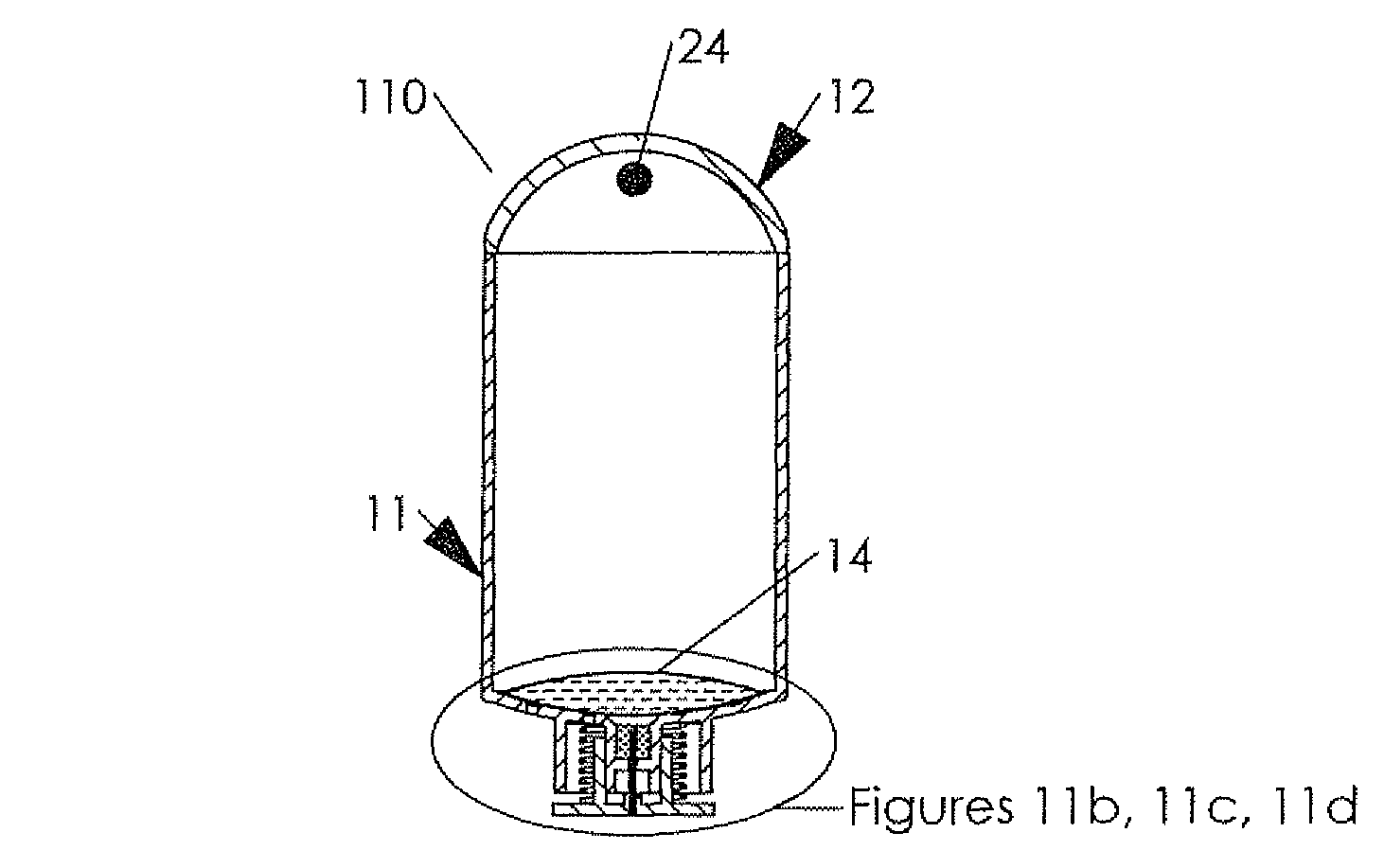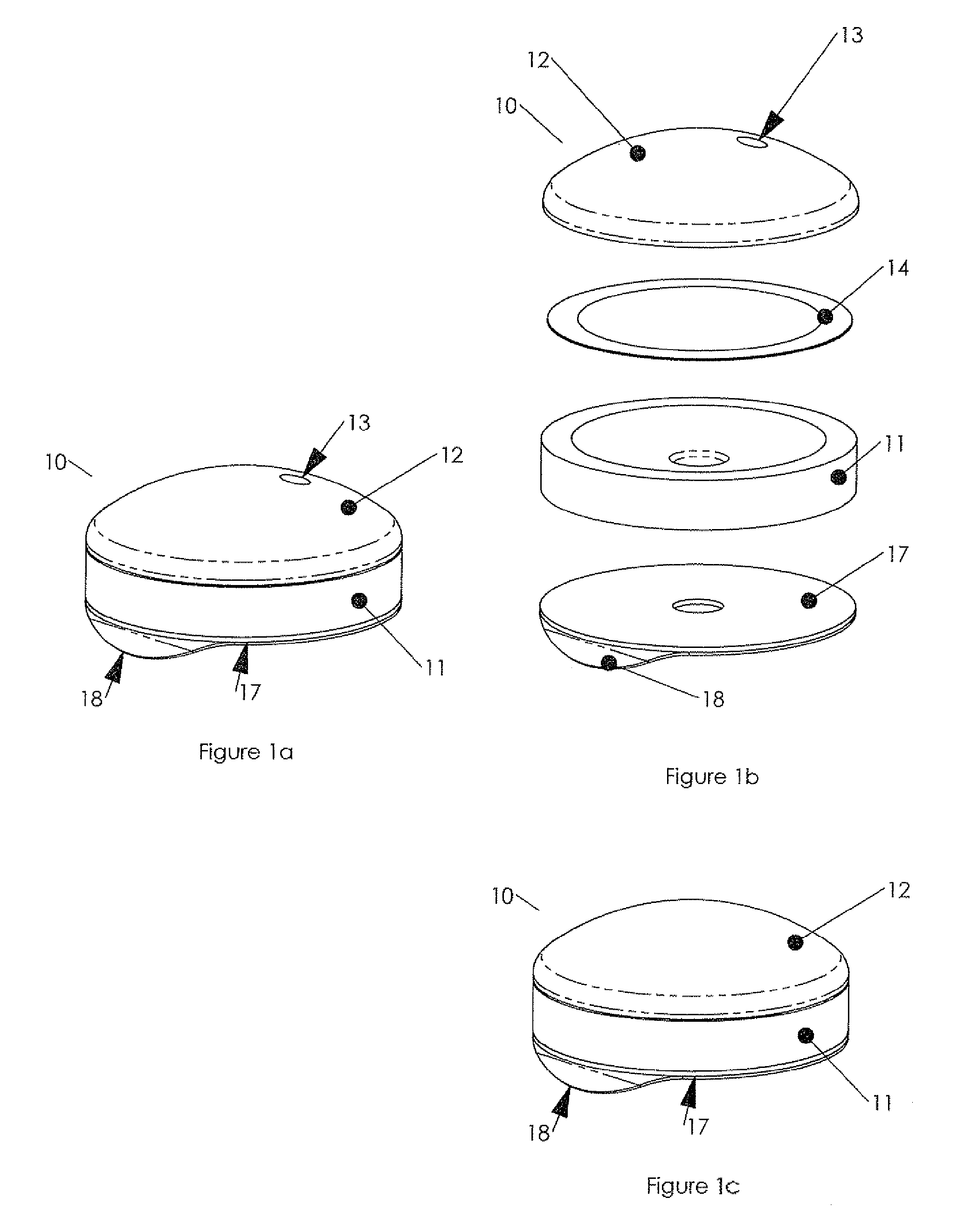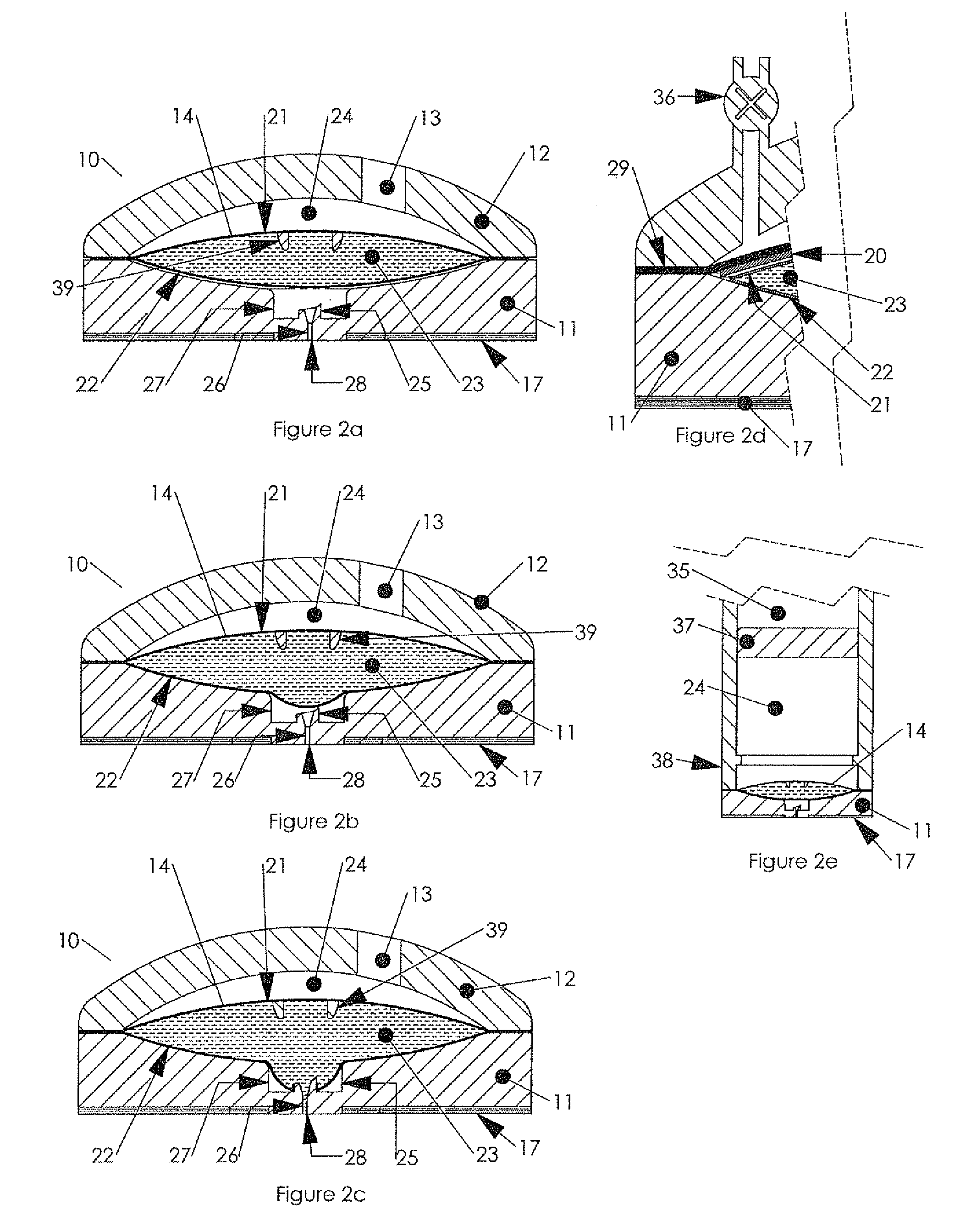New delivery methods also extend the product life of drugs going off patent, thus delaying the entry of generics in the market.
In addition to pharmaceutical products, a number of biotechnology products are being developed that require an alternate or novel route of administration because most of them are ineffective when administered orally.
In several cases the apparatus structure does not comply with the requirements for storage and transportation of the drug to the point and time of use.
For example molded plastic parts are permeable to several liquid form substances and in various cases where the drug reservoir of the apparatus is made from molded plastic components the drug is introduced into the apparatus just prior to the treatment, making the administration process more sophisticated and in many cases more expensive.
The invasiveness and fear of injections (resulting in poor patient compliance) as well as a financial incentive to gain valuable market share has encouraged a number of companies to develop technologies that can lead to needle-free delivery of medications.
Advantages of the device are its small design and convenience of attaching a pharmaceutical pre-filled ampule.
1. All of the above devices and technologies utilize a drug reservoir in a fashion of a cylinder and a piston. This construction present sealing challenges between the drug cylinder and piston as well as friction issues.
2. The activation mechanisms are either gas loaded piston or spring loaded arrangement which are complex and expensive to manufacture. It would be advantageous if the gas pressure could be applied directly to the drug reservoir avoiding redundancy of mechanisms.
3. In the spring loaded devices the loading mechanisms are cumbersome to operate. This disadvantage becomes more pronounced where massive administration has to be conducted for example in a massive vaccination campaign.
4. For those devices that comprise a prefilled reservoir, said reservoir is usually made from glass and it is expensive to manufacture.
5. Other devices utilize reservoirs comprising molded plastic walls, which are not suitable for storing and transportation of the drugs. In this case the administration procedure requires filling the device prior to use, making the procedure cumbersome and in certain devices a contamination risk.
6. Moreover all of the above devices require a potential energy storage or generation means capable of instantly pressurizing the drug reservoir. That requirement limits the choice of adequate solutions to relatively expensive ones or sophisticated to operate solutions.
7. The above prior art needle free devices require extremely high pressure (about 300 bar) to initially penetrate the skin which impose extreme mechanical requirements on the components of these devices.
8. And lastly, none of the above devices is inherently adequate for combination-drug administration, or drug reconstitution (resuscitation), where content of separately sealed reservoirs are to be expelled in a single administration, as these device simply dispense the solution that present in its piston fashion reservoirs.
While this apparatus mostly avoids the problems associated with frictional surfaces and stoppers moving in a cylinder this apparatus has a drawback that the flexible part of the ampule may be destroyed when pressed by the rod.
A further drawback of this device is that the pressures which can be applied to the ampule are limited due to the risk of destruction and also by the relatively low energy stored in a spring.
Another disadvantage of this apparatus is that a mechanical compression of the ampule by a rod cannot guarantee that the liquid within the ampule is being ejected totally.
Such a device is therefore insufficient when it is desired to inject a specific amount of medication.
Such a process is not only cumbersome but it also bears the risk that the medication and / or the fluid channel is contaminated.
The injection of a contaminated medical fluid is totally unacceptable in the therapeutic field.
This problem of contamination is mostly unresolved in the prior art of hypodermic liquid injection.
A further drawback of the system described in FR-1.121.237 is that no means for purging air from the liquid chamber are described.
However, air within the liquid chamber leads to disadvantageous effects as described further below.
The device described in this document is very complicated and uses a rechargeable pressure chamber into which a pressurized gas is introduced and in addition thereto a chamber with a hydraulic fluid is employed.
However, this document does not disclose a medication container including a sterile nozzle.
Therefore this document does not give an overall solution to the object of sterile injection.
While U.S. Pat. Nos. 3,387,609 and 4,051,851 describes a rupturable reservoir one may understand that the rupturing is desired immediately upon performing the injection, and that excessive pressure built in the vial prior to the rupture of the diaphragm works against the purpose of the idea.
It is also noted that the integrity of the prefilled package is not established and that the sealing of the medicament is limited.
Thus the pressure control in U.S. Pat. No. 6,258,063 is limited to control of exhaust of the combustion products.
But this assumption in unlikely to hold when the sealing is to happen between a very thin needle and a thin wall in particular with a Polypropylene wall which is relatively rigid material.
Disadvantageously, such leakage would not only affect the accuracy of the administered dose but would also expel the leaked medicament to the surrounding, potentially exposing other people to the medicament.
While this assumption may be acceptable for certain indications it may be poor for others where highly accurate dose is required or where expelling the leaked drug to the environment is not acceptable.
A further technical limitation of the apparatus related to as Type B in U.S. Pat. No. 6,258,063 is that the medication unit which consist of two major walls is being sandwiched between a first shell and a second shell.
While this construction is feasible and acceptable for some embodiments it has several disadvantages: 1) it unnecessarily complicates the manufacturing assembly as the reservoir participates in the construction of the handling device, 2) it introduce unnecessarily sealing failure modes as the reservoir wall participate in the sealing of the handling device, 3) it introduce super demands from the reservoir wall which has to comply with several functions, and 4) Fixing the reservoir walls to the handling unit can introduce excessive stresses in the wall vs. otherwise pure pressure, and 5) more constrains between components in an assembly means tougher tolerance challenges.
Also, the apparatus described in U.S. Pat. No. 6,258,063 is limited to a specific form of application where a single medicament is instantly delivered to the skin, and does not comply with any application where more than a single substance has to be stored and delivered.
Both of these patents describe complex constructions utilizing a piston and a barrel which will be expensive to manufacture.
The reservoirs in these patents comprise rigid wall portion and rubber sealing members which are mostly unsuitable for long term storage of pharmaceutical compounds from the time of manufacturing to the time of administration.
Yet, needleless injection is painful and so fear resistance may still exist by many patients which my cause the patient to move during administration.
Such movement can affect the efficiency of the administered dose penetration, and in the worse case can injure the patient.
The differentiation of parts of the mechanism to different functions of U.S. Pat. No. 6,979,316 result in a relatively complex mechanism.
The pressurizing mechanism of the reservoir in the above prior art comprise separate mechanisms or sub-mechanisms for creating fluid communication between the reservoir and the administration device, and for propelling the deliverable fluid, resulting in redundancy of mechanisms which effect complexity and costs of these apparatuses.
a) contamination—the space between the bladder and the base (where the rupturing members are located) is exposed to contamination from the time that the apparatus has been removed from the package to the time that the cover is closed.
b) The chamber in which the reservoir is accommodated contains air (by definition of the description in this patent) which will be exposed to the deliverable fluid after rupturing of the reservoir and most likely be delivered to the body of a patient. While it might not be desirable to administrate air to begin with, in this case the air is ambient air that was picked up prior to closing the cover, therefore bare a contamination risk, as well as unpredictable dose size. In fact if the cover establish an air tight seal with the chamber where the reservoir is accommodated (U.S. Pat. No. 147 is not clear about this point) than it is most likely that air will be delivered to the patient when the chamber is pressurized, even before the reservoir has been ruptured.
c) If the cover does not establish a fluid tight seal with the chamber then the deliverable fluid can be spilled from the apparatus and effect the dose accuracy. It is also unclear in this case what propels the deliverable fluid to the administration device as (if the cover does not establish a fluid tight seal with the chamber) the chamber is not pressurized.
Disadvantageously this second ingredient is exposed to ambient air until the cover of the apparatus has been closed.
Another disadvantage is that there is no time for the ingredients to interact prior to administrating to the body.
U.S. Pat. No. 171 does not provide means for preventing rupture of the reservoir prior to having the administration device properly communicating with the body of the patient, and therefore accidental or premature closing of the cover will result in rupturing of the reservoir and spillage of the deliverable fluid.
Lastly the reservoir of U.S. Pat. No. 171 comprises a complex assembly which includes the rupturing means and the administration means and is not very convenient and safe to run in automatic filling processes, and in particularly not in standard or retrofitted filling lines such as form-fill-seal manufacturing lines.
 Login to View More
Login to View More  Login to View More
Login to View More 


